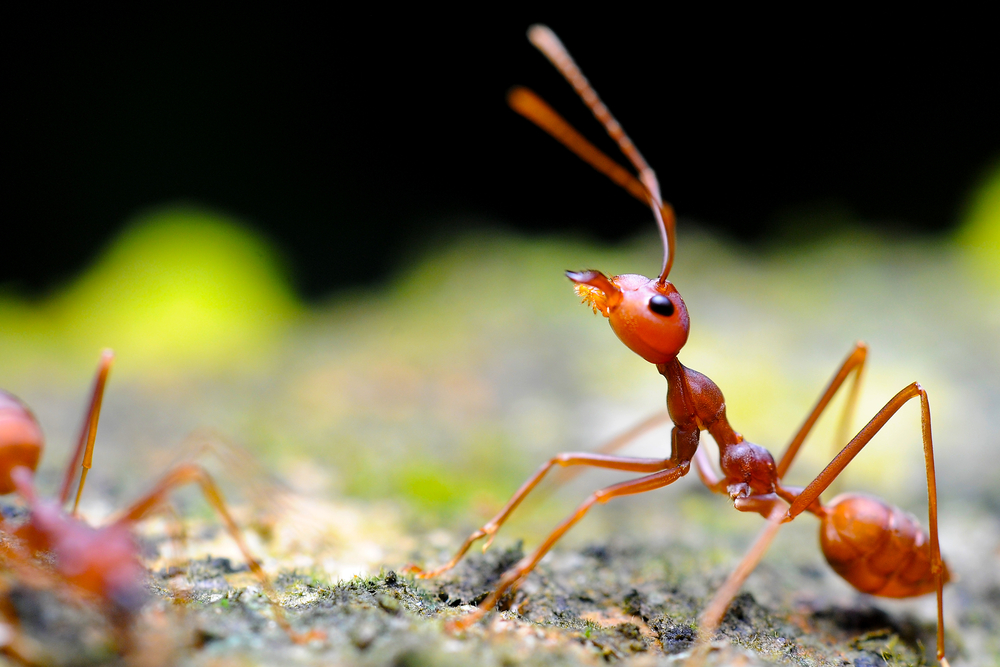Largest Bug: The title for the largest bug in the world often goes to the Goliath beetle (Goliathus species), particularly the Goliathus goliatus. These beetles can reach lengths of up to 4.3 inches (11 centimeters) or even more.
About A Bug’s Life
The number of bug species in the world is vast and not precisely known. In the animal kingdom, the term “bug” is often used informally to refer to insects and other small arthropods. Insects alone make up the largest and most diverse group of animals on Earth, with over a million described species. However, scientists estimate that there could be several million more insect species yet to be discovered and described.
Apart from insects, other arthropods, like arachnids (spiders, scorpions, mites), myriapods (millipedes and centipedes), and crustaceans, also contribute to the world’s bug diversity.
In total, the number of bug species, including insects and other related arthropods, is likely to be in the millions, and new species are continually being discovered by scientists. Bugs play crucial roles in ecosystems, and their incredible diversity is a testament to the complexity and richness of life on our planet.
The world of bugs, which includes insects and other small arthropods, is incredibly diverse. Keep in mind that the “most” in the FAQs below can vary depending on the criteria used, and new discoveries are made as scientists continue to explore the world of bugs.
Types of A Bug’s Life
Ants
Ants, social insects, exhibit a wide range of species, behaviors, and roles in ecosystems, from industrious workers to fierce defenders and agricultural cultivators.
Read MoreBees
Bees, vital pollinators, are diverse, organized, & essential for plant reproduction & food production, with incredible adaptations.
Read MoreBeetles
Beetles, Earth's most diverse insects, come in countless shapes and sizes. They inhabit diverse ecosystems, serving ecological roles from decomposition to pest control
Read MoreButterflies
Butterflies, enchanting insects, display vibrant colors and intricate patterns. From pollinating flowers to symbolizing transformation, they grace the world with their delicate beauty.
Read MoreCicada
Cicadas, noisy insects, emerge in periodic swarms with deafening choruses. Their unique life cycle spans years underground, making them fascinating creatures of summer.
Cockroach
Cockroaches are resilient insects that thrive worldwide. With flattened bodies, six legs, and antennae, they're known for their adaptability and ability to survive in various environments.
Cricket
Crickets are known for their distinctive chirping sounds produced by rubbing their wings. They are part of the Orthoptera order and are often found in grassy areas.
Dragonflies
Dragonflies are agile insects with iridescent wings & large compound eyes. They are skilled predators in the world of insects, preying on smaller bugs near water bodies.
Read MoreEarwig
Earwigs are small insects with pincers at their rear end. They often hide in dark, damp places and feed on plants, insects, and organic matter.
Firefly
Fireflies are bioluminescent beetles known for their nighttime glow. They use light signals to communicate & attract mates, creating beautiful displays in the darkness.
Grasshopper
Grasshoppers are herbivorous insects known for their powerful hind legs, enabling them to leap great distances. They play vital roles in ecosystems as plant eaters.
House Fly
House flies are common pests found worldwide. They feed on decaying matter and can transmit diseases. Their life cycle includes egg, larva, pupa, and adult stages.
Lady Bug
Ladybugs, also known as ladybirds or lady beetles, are small, colorful insects. They are often considered beneficial because they prey on plant-damaging pests like aphids.
Mosquito
Mosquitoes are tiny insects known for their itchy bites. They feed on blood & can transmit diseases to humans and animals, making them a nuisance & health concern.
Picasso Bug
Picasso bugs, or painted bugs, are strikingly colored insects found in tropical regions. Their vibrant patterns resemble abstract art.
Praying Mantis
Praying mantises are carnivorous insects known for their distinctive posture resembling prayer. They are skilled hunters, capturing prey with their sharp forelimbs.
Spiders
Spiders are arachnids known for their silk-spinning abilities and eight legs. They play a crucial role in ecosystems by controlling insect populations.
Read MoreTermite
Termites are social insects that feed on wood & play important roles in decomposition. Some species are pests causing damage to buildings & structures.
Wasps
Wasps are flying insects known for their stingers and social colonies. They can be beneficial predators, but some species are pests and can deliver painful stings.
Read MoreFAQ’s
1. What is the largest bug species in the world?
2. What is the smallest bug species in the world?
Smallest Bug: The title for the smallest bug in the world is highly contested due to the vast number of tiny insects. One of the smallest is the fairy wasp (Dicopomorpha echmepterygis), which can be as tiny as 0.139 millimeters, smaller than some single-celled organisms.
3. What is the fastest bug in the world?
Fastest Bug: The fastest bug is often considered to be the tiger beetle (Cicindelinae). These insects are known for their incredible speed and can run at a relative speed of 5.6 miles per hour (9 kilometers per hour), which is impressive for their size.
4. What is the most dangerous bug in the world?
Most Dangerous Bug: In terms of the most dangerous bug, it’s crucial to understand that many bugs can be harmful due to the diseases they carry or the toxins they produce. For example, mosquitoes are often considered the most dangerous due to their ability to transmit diseases like malaria, dengue fever, and Zika virus.
5. What is the most poisonous bug in the world?
Most Poisonous Bug: Many bugs are poisonous, but one of the most poisonous is the harvester ant (Pogonomyrmex species). Their venom is potent and can cause severe allergic reactions in humans.
Sources
- Burnie, David & Wilson, Don, Animal, Smithsonian Institute, Washington DC.
- Hickman et al, Integrated Principle of Zoology, McGraw Hill, Boston.






























































